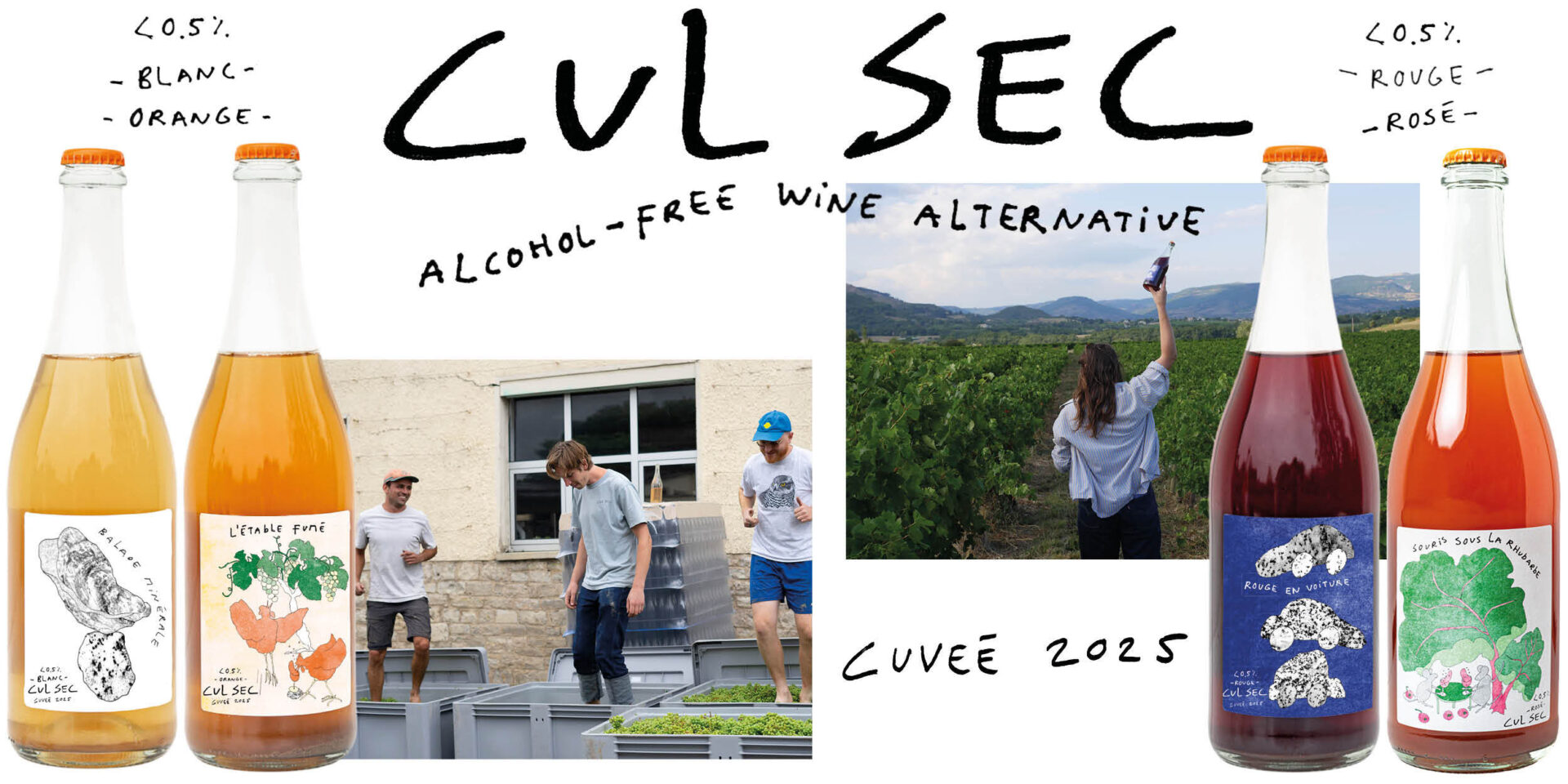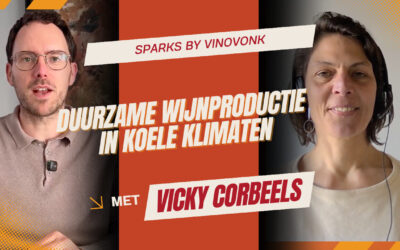What if the Netherlands’ notorious lack of sunshine wasn’t a disadvantage for winemaking, but a secret weapon? That’s the radical proposition behind Cul Sec, the Culemborg-based alcohol-free wine alternative that sold out its entire 2024 debut vintage in just four months. Now, with their 2025 cuvée—ten times larger in volume—the team at Fruitslagers (Fruit Butchers, I love that name!) is doubling down on a counterintuitive truth: sometimes the best grapes for wine are the ones that never fully ripen.

The Waste That Wasn’t
Here’s the thing about making alcohol-free wine: you need a completely different playbook. At the heart of Cul Sec lies verjus, the tart juice pressed from unripe grapes. For traditional winemakers, these under-ripe clusters represent failure, destined for the compost heap. But for an alcohol-free alternative? They’re perfect. “We needed grapes low in sugar but rich in tannins and acids,” the makers explain. The Netherlands’ shorter growing season—typically a curse for viticulture—produces exactly these characteristics.
This year’s vintage draws from an international palette, featuring Müller-Thurgau and Bacchus from Germany’s Kitzingen region, as well as Viognier and Chardonnay from France’s Ardèche, and even grapes from Hungary. Increasingly, though, Dutch-grown fruit from partners like Dassemus in Chaam forms the backbone. Both juice and pulp play crucial roles. The juice provides mineral acidity and oxidative notes, while the pulp undergoes lacto-fermentation—the same bacterial process that creates sauerkraut’s funky complexity—on water kefir and kombucha bases.
Laboratory Alchemy Meets Traditional Craft
The 2025 cuvée marks a genuine leap in sophistication. After a year of working closely with farmers, the Fruitslagers team has refined processes that sound more like perfume creation than winemaking. Take their ultrasonic extraction technique: high-frequency sound waves pull flavor from ingredients in minutes rather than weeks. This captures the lemony brightness of Douglas pine and the green intensity of blackcurrant leaf without oxidation.
Meanwhile, oak treatment has undergone considerable evolution. Where 2024 relied heavily on toasted barrels, this year explores fresh oak, oak bark, and a clever technique of aging apple cider vinegar in barrels before blending it with unripe grape skins. The result? A tannic, bracingly sour base, particularly suited to L’Étable Fumé, their orange wine features a hay blend of Dutch-grown lucerne, chamomile, and verbena from local food forests.
The four 2025 expressions—Blanc, Orange, Rosé, and Rouge—share a philosophy of restraint. Sugar levels have dropped further from last year. The Rouge, for instance, layers lacto-fermented juice with teas brewed from Pinot Noir and Cabernet skins, building body and tannin without sweetness.
Ambition Meets Reality
However, scaling brings legitimate concerns. Can Cul Sec’s experimental edge survive tenfold production increases? The wild, unpredictable character that made 2024 compelling might get tamed in pursuit of consistency. There’s also the price question. While quality is evident, Cul Sec costs as much or more than many conventional wines. For consumers accustomed to viewing alcohol-free options as cheaper alternatives, this positioning may prove a tough sell, even if justified by the labor-intensive process.
The sustainability story is genuine—collaborations with food forests Nieuwe Bodem and Schevichoven, as well as Elegast cidermakers, create a regenerative supply chain. Yet one wonders if the market is ready to pay premium prices for that narrative.
Worth the Wait
I’ll be tasting these bottles myself when they’re properly ready to explore after the October 20th launch. The makers promise expressions that are drier, more textural, and longer-lasting than their debut. If they deliver, Cul Sec 2025 might prove that great wine doesn’t require alcohol, sunshine, or even ripe grapes.
Can unripe really mean ripe for innovation? Based on how quickly 2024 disappeared from shelves, plenty of people think so. I’m curious to see whether this new vintage lives up to the hype—and whether the Netherlands might indeed be the perfect place for alcohol-free wine after all.






